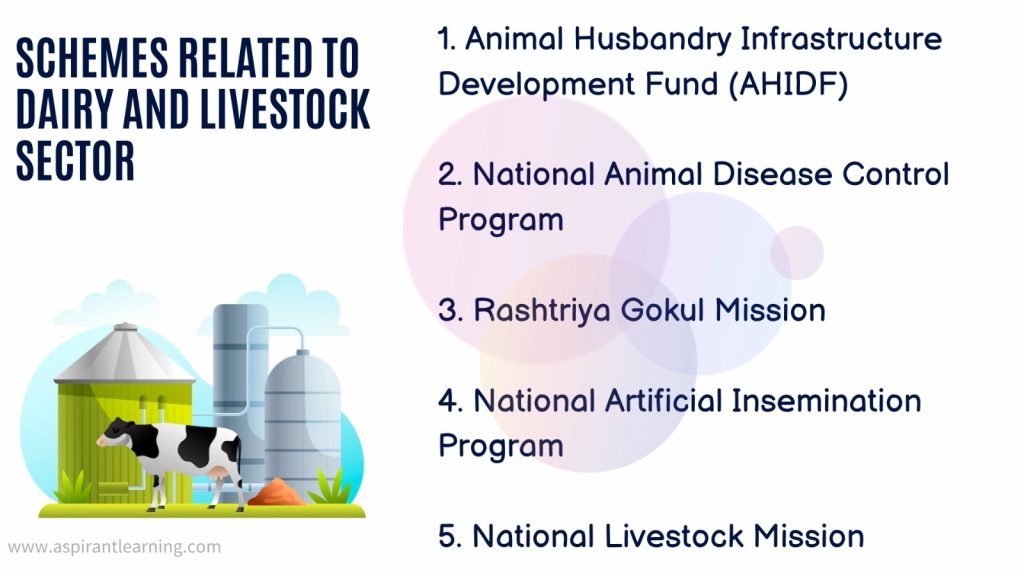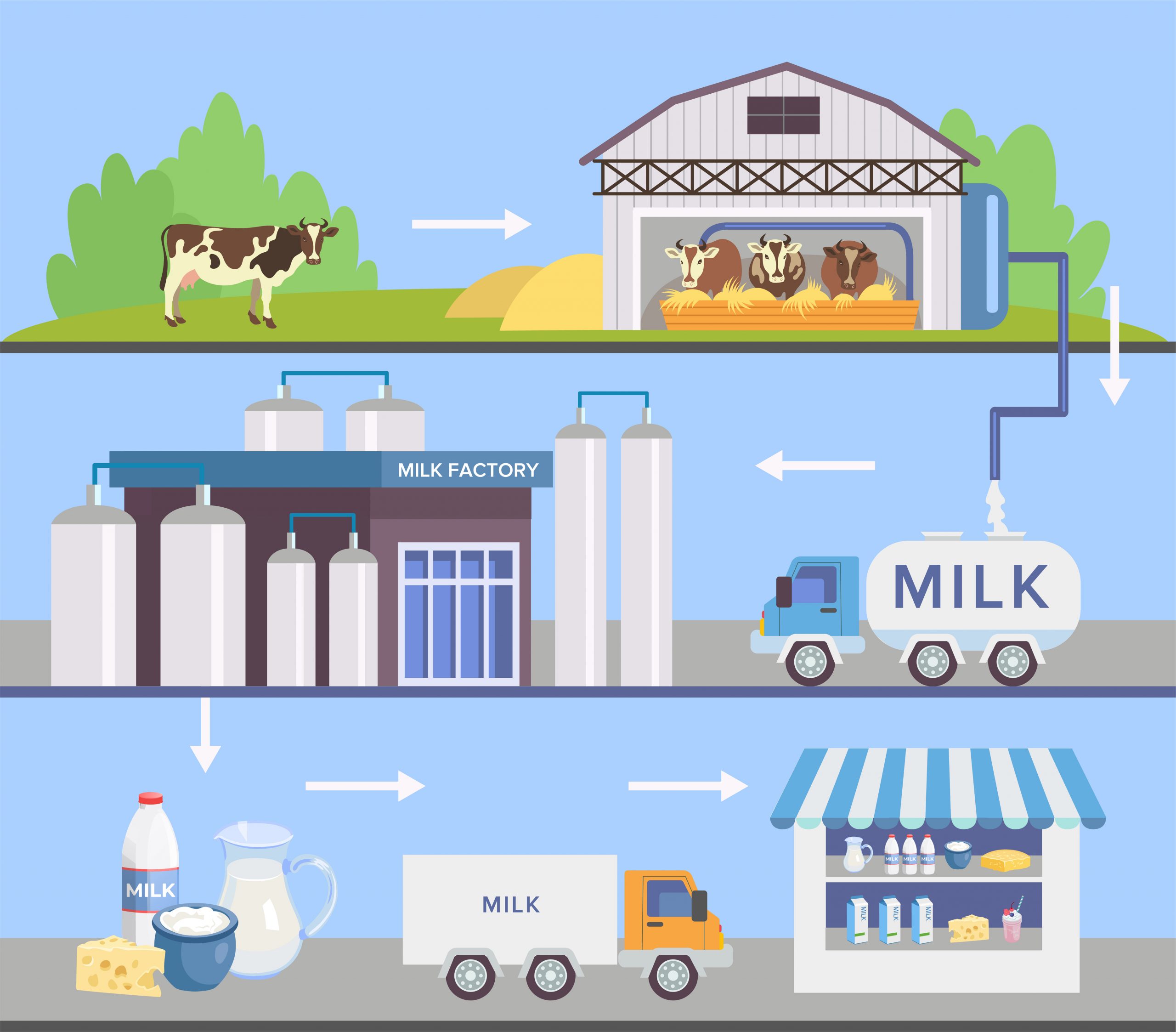News Highlights:
- India, the world’s largest milk-producing nation, suffers a rare shortage that has driven prices higher ahead of peak summer demand.
- Milk prices in India have risen by more than 10 per cent in the last year, while dairy procurement has shrunk by about 7 per cent.
Current State of the Dairy and Livestock Sector:
- Overview:
- India ranks 1st in milk production and contributes 23 % of global milk production. Milk production in the country has grown at a compound annual growth rate of about 6.2 % to reach 210 million tonnes in 2020-21 from 146.31 million tonnes in 2014-15.
- Dairy is the single largest agricultural commodity contributing 5% of the national economy, witnessing 6.4% (CAGR) in the past 5 years.
- Approximately 80 million people are employed in the dairy industry directly or indirectly.
- Top milk-producing states:
- The top 5 milk-producing states are: Uttar Pradesh (14.9%, 31.4 MMT), Rajasthan (14.6%, 30.7 MMT), Madhya Pradesh (8.6%, 18.0 MMT), Gujarat (7.6%, 15.9 MMT) and Andhra Pradesh (7.0%, 14.7 MMT).

Significance of the Indian dairy sector:
- Acts as a buffer:
- Milk animals are a buffer for farmers during droughts and flood conditions.
- Also, milk animals are more evenly distributed among farmers than on agricultural land.
- Not a seasonal occupation:
- Dairying is not a seasonal occupation like farming, as milk and milk products can be produced throughout the year, thus leading to the year generation of income.
- Tackle malnutrition:
- Milk is considered a ‘Whole meal’. Dairy products are highly nutritious, with high amounts of proteins and calcium, thus helping tackle malnutrition in India.
- For this reason, several state governments are trying to add Milk to their school’s Mid-day meal scheme.
- Huge Employment Generation:
- The dairy sector employs around 80 million people, from milk-producing farmers in rural areas to milk distributors in urban areas.
- Promotes women empowerment:
- Most of the milking work in rural areas is done by women.
- They also work as collectors and suppliers of milk to village milk collection centres.
- This helps rural women earn some income and automatically promotes women’s empowerment.
- Boosting other sectors:
- The dairy sector promotes the growth of other sectors like fodder, organic manure manufacturing, and food processing industries like Curd, cheese, and paneer manufacturing.
Current issues with the Sector:
- Low productivity of Indian dairy animals:
- Improving the productivity of farm animals is one of the significant challenges.
- The average annual milk yield of Indian cattle is 1172 kg, only about 50% of the global average.
- Disease outbreaks
- The Frequent outbreaks of diseases like Food and Mouth Diseases, Black Quarter infection, Influenza etc., continue to affect Livestock health and lowers productivity.
- Limited success in cross-breeding:
- Crossbreeding of indigenous species with exotic stocks to enhance the genetic potential of different species has been successful only to a limited extent.
- Supply Chain issues:
- Supply Chain issues which include collection, pasteurisation and transportation of milk in a safe environment.
- Since 60% of the dairy industry lies in informal dairy, it becomes difficult to ensure regular flow and quality of milk.
- That is why the adulteration of milk remains a perennial issue in India.
- Unorganised Nature:
- The unorganised nature of the dairy farming industry has resulted in minimal penetration of technological progress within the sector.
- This has further led to consistently high wastage and a lack of standardisation in terms of quality and quantity.
- Data Deficiency:
- The informality of the sector also leads to a lack of data regarding total milk production, wastage of milk, and financial flows in the sector, further inhibiting the sector’s formalisation.
- Low returns
- There have been perennial complaints from milk farmers about low milk purchase prices paid to them by milk companies as compared to the final milk price in the market.
- This leads to the cornering of profits by companies while actual producers get poor returns.
Pic Courtesy: Freepik
Content Source: PIB



